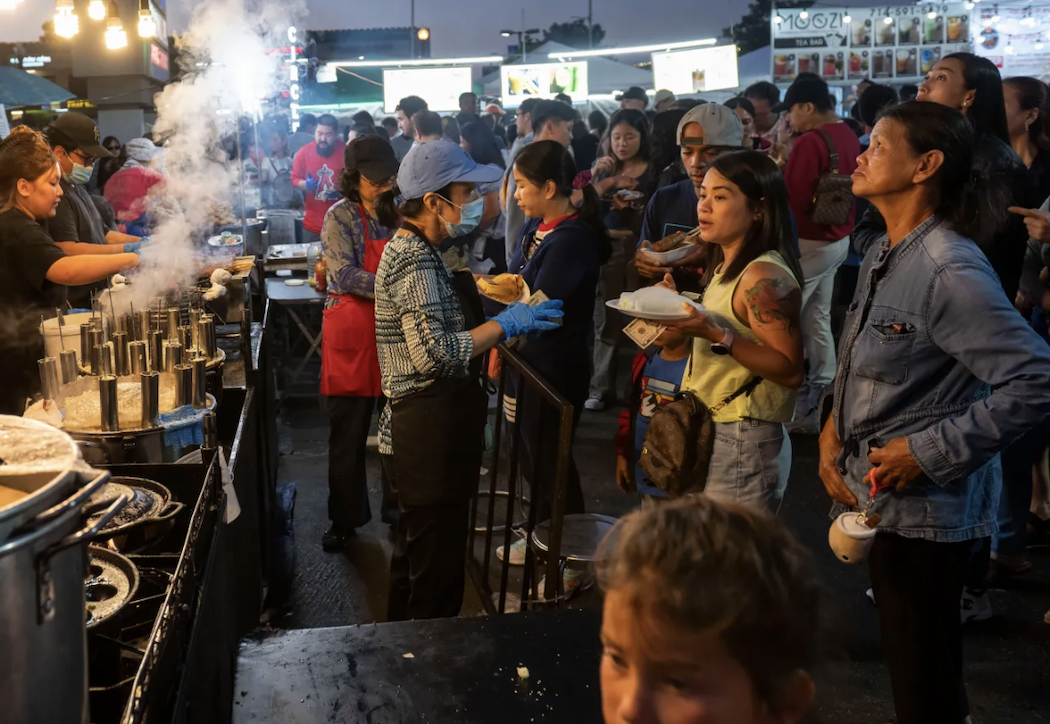
During summer months around 4,000 people each night head for the popular Little Saigon Night Market. Photo by Paul Rodriguez
Southern California is renowned for picturesque beaches, iconic theme parks, Hollywood’s Walk of Fame and vibrant cultural scene. But visitors who travel from Los Angeles south toward Orange County will discover a rich tapestry of diverse Asian communities.
America’s Asian population is growing both in numbers and spending power. A 2019 Pew Research Center study reported that the median household income of Asian Americans was 36% more than the average US household ($88,000 vs. $61,000). As of 2022, there are forty-two Asian American CEOs for S&P 500 and Fortune 500 companies. In addition, foreign travelers from Asian countries make up a significant number of visitors to the US with China, South Korea, Japan, and India ranked in USA Today’s top 10. Affluent Asian tourists and prosperous Asian American citizens often cross paths in the temples, shops and restaurants of California’s Orange County.
Orange County’s Humble Roots
As recently as the 1950s, agriculture was the dominant industry in Orange County. Wedged between Los Angeles and San Diego counties, Orange County (or The OC as it’s sometimes known) was carpeted with citrus groves thanks to the region’s warm climate, which at its height produced one-sixth of the country’s Valencia orange crop.
But with the rise of the personal automobile, came the introduction of freeways that soon connected rural communities to larger metropolitan hubs.
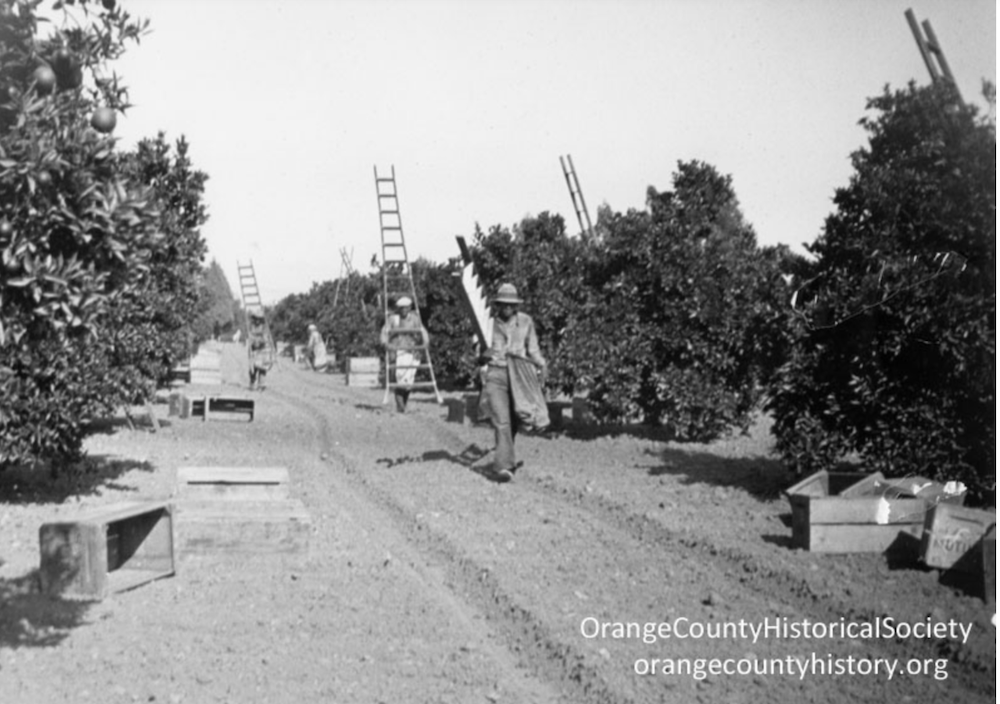
Early immigrants picking citrus in Orange County. Photo credit: Orange County Historical Society
By the mid-1960s, tract housing began replacing farms. Between 1953 and 1962 new cities like Buena Park, Costa Mesa, La Palma, Garden Grove, Cypress, Westminster, Fountain Valley, Los Alamitos, San Juan Capistrano and Villa Park were being incorporated every year. The opening of Disneyland in 1955 solidified Orange County as a tourist destination invigorating the economy and incorporating more cities.
The 1960s gave Orange County national attention with the election of its native son President Richard Nixon, followed by the opening of the University of California in Irvine and the arrival of major league baseball in Anaheim. Then in the 1970s with the fall of Saigon, tens of thousands of Vietnamese refugees arrived and began changing the area’s demographics.
Little Saigon: A Hub for Foodies
Located just a few miles south of the world-famous Disneyland, the cities of Westminster, Garden Grove, Huntington Beach, Fountain Valley and Santa Ana boast the largest and oldest Vietnamese settlements in the United States. The area is home to about 200,000 Vietnamese today, making it the largest ethnic concentration outside Vietnam.
“After the fall of Saigon, Vietnamese refugee families arriving here tended to be the ones who had been successful back home and brought money, connections and other resources with them,” says Dr. Thúy Võ Đặng, former Archivist for the Southeast Asian Archive at UC Irvine and author of the book Vietnamese in Orange County. All of that contributes to building the infrastructure for a successful community.”
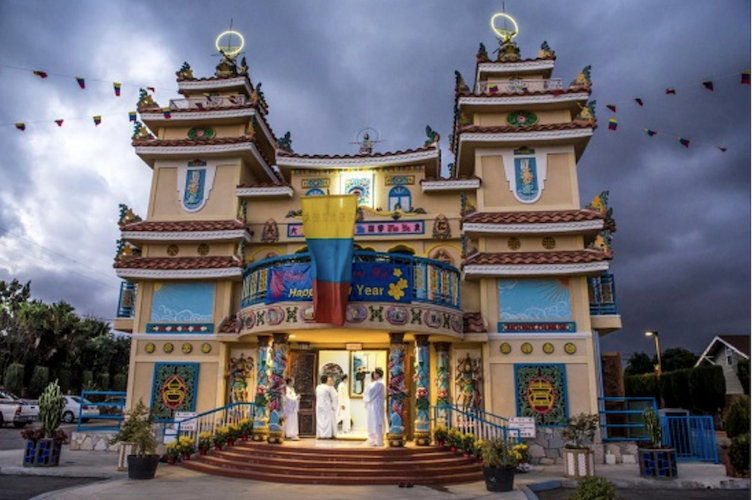
The Vietnamese Cao Dai Temple is one of the most beautiful places of worship in Orange County.
Today, the East–West corridor along Bolsa Avenue has America’s largest concentration of Vietnamese-owned strip malls and retail shops. From supermarkets and banks to funeral homes, jewelry shops and plastic surgeons, there are retail services that cater to every aspect of Vietnamese American life. But the area’s real attraction is food.
Officially designated as “Little Saigon,” the area has close to 300 restaurants that offer authentic fare that includes pho noodle soups, banh mi restaurants, and the beloved Vietnamese drip coffees served over condensed milk. It even has its own cookbook titled Little Saigon Cookbook: Vietnamese Cuisine and Culture in Southern California’s Little Saigon by author Ann Le with recipes that include cabbage goi salad and crispy crepes.
Fasting Not Allowed
Driving down the street with the windows down, visitors are treated to the delightful aromas of fried scallions and grilled garlic. Follow your nose to a restaurant like the trendy Pho Holic on Bolsa Avenue for lunch, and you’ll be enveloped by the earthy fragrances of cinnamon, toasted cloves, and charred ginger root. Easy on the pocketbook, a bowl of beef pho soup will only set you back about $12.
“Food is very important to all Asians, but especially Vietnamese people,” said Tram Le, a Vietnamese-Chinese resident who grew up in Westminster. “I think the food culture is what makes Asian Americans so unique in this country. We are like crazy enthusiastic about food.”
For visiting foodies, the Little Saigon Night Market is an absolute must-see during the summer months. Packed with outdoor food stalls, the market is a feast for the senses with a DJ spinning live music, colorful string lights, and endless stalls serving delicious goodies like pan-fried crispy coconut cakes, grilled shrimp skewers, pork chops on a bed of buttered broken rice, iced lavender milk tea, and chocolate mochi ice cream. Over 4,000 visitors go to the Night Market daily, so arrive early to find a parking spot. Admission is free and most vendors will also accept credit card payments if you don’t have enough cash on hand.
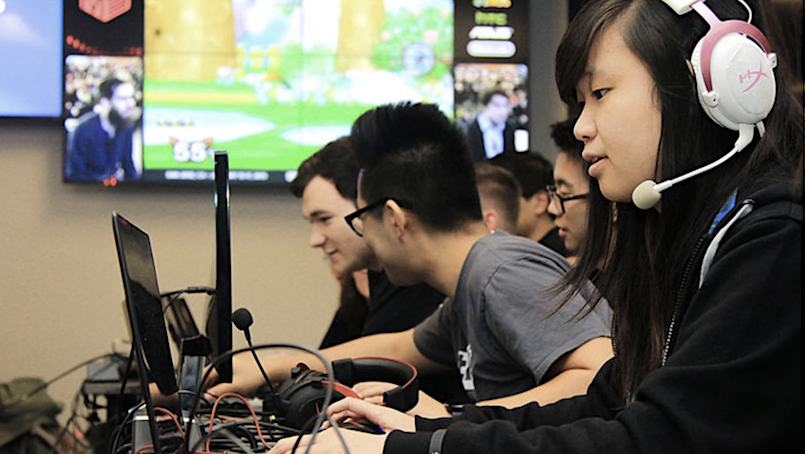
Computer programming students at UC Irvine test sports simulations. Photo courtesy of University of California, Irvine
Irvine – A City Focused On Safety, Education, and Health
Further south in Orange County is the City of Irvine, a major hub for Asian Americans with excellent schools, safe neighborhoods plus South and East Asian amenities that draw a large number of East and Southeast Asian cultures.
One of the key features of Irvine is its emphasis on education, a magnet for many Asian immigrant cultures. University High School and Northwood High School rank among the top 50 nationally while the University of California, Irvine is ranked No. 34 among U.S. colleges. As of 2021, Asians constituted 34% of UC Irvine’s student body.
The history of Asians in Irvine can be traced back to the late 1960s and early 1970s when the city was in its early stages of development with immigrants from East and Southeast Asia arriving. While Los Angeles County to the north saw an increase in crime and a decrease in housing, Orange County positioned itself as a safer, cheaper alternative. It worked.
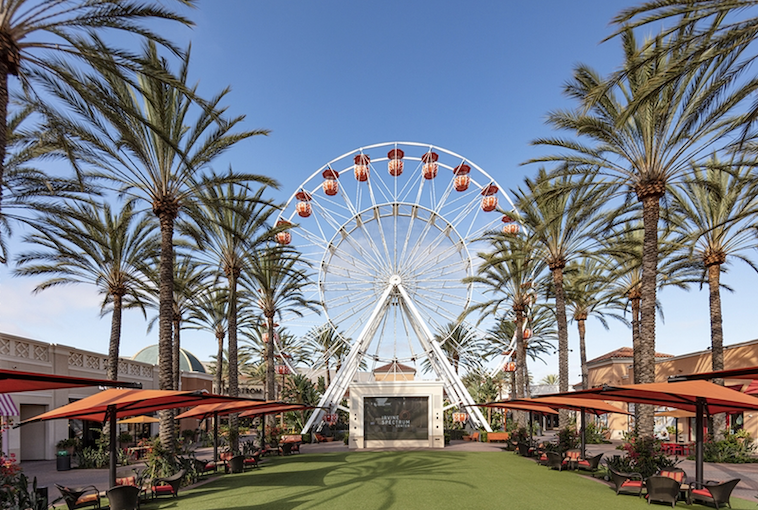
The Ferris wheel operates daily at the plush Irvine Spectrum. Photo courtesy of Irvine Spectrum Center
The academic rigor of Asian residents has paid off for the City of Irvine. Today, the median family income is about $110,000, making it the seventh richest city in the US. Thanks to its wealth, people on vacation have several shopping and entertainment options such as the Spectrum Center, which includes shopping, dining, an IMAX theater, and even a giant outdoor Ferris wheel.
Those looking for more luxurious options should drive to South Coast Plaza in nearby Costa Mesa. Known as the Beverly Hills of Orange County, South Coast Plaza has positioned itself as a global shopping destination with 250 luxury brands like Chanel and Cartier In addition to shopping, there’s an array of food options from Hamamori Sushi to more casual dining like Taiwan’s Ding Tai Fung. The complex also houses the elaborately designed Segerstrom Center for the Arts as well as the stunning Orange County Museum of Arts.
But Asian influence goes beyond academics and income, it has also impacted health. While Western medicine prescribes drugs to treat a disease, eastern medicine focuses on treating the person with acupuncture, qi gong, and Chinese herbal medicine. As OC’s Asian population has increased so has demand for these treatments. Today, UC Irvine has an entire department dedicated to these natural, and culturally-based health practices.
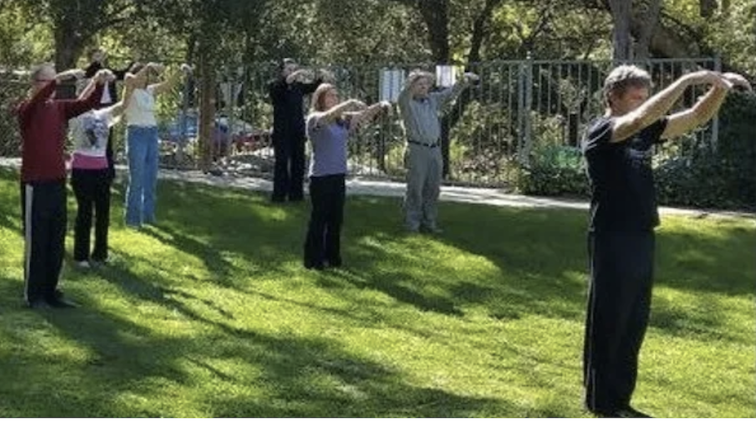
Tai chi practitioners at Modjeska Park gather every Saturday morning for classes.
“I don’t remember the last time I got a cold,” says Dr. Shin Lin, a professor of biochemistry who leads a community class on the benefits of tai chi, a low-intensity Chinese movement exercise. “Our research shows that when you move in this repetitive way, you generate stress-reducing neurons in a part of the brain called the hippocampus.” The result is lower blood pressure and a healthier, balanced, immune system.
Visitors who are curious about tai chi can even take a class on Saturday morning for only $12 through the Orange County Rec and Parks.
South Bay: Accessible Luxury And Affluence
The history of Asians in the South Bay region of Southern California, which encompasses cities such as Torrance, Gardena, and Redondo Beach, dates to waves of 20th-century immigration.
Japanese Americans established a presence in the South Bay when it was still farmland, finding jobs in agriculture and fishing. They soon were joined by Filipinos who quickly found jobs in agriculture, the military and healthcare. Next to arrive were Koreans in the 1960s and 1970s, followed by Chinese, Taiwanese, and others in the late 1980s.
Today, the South Bay is one of the trendiest and most affluent regions in Southern California with cities like Manhattan Beach and Palos Verdes Peninsula. Corporate headquarters like Honda and Raytheon have also brought in a steady growth of middle-income employees and their families whose values are rooted in practicality.
The Sonesta Redondo Beach and Marina in Redondo Beach (where the Beach Boys lived) is an example of an establishment that balances chic with economy. Situated near the water, the hotel is centrally located to many points of interest including the Korean Bell of Friendship in San Pedro.
A short 15-minute drive to the LAX international airport, Sonesta is close to shopping, sightseeing, or just a relaxing stay to enjoy the rooftop pool, walk around the neighborhood in quaint Redondo Beach, or cruise down the boardwalk on a bike. The concierge at the hotel can set up guests with a beach cruiser.
Chef Hayato at the hotel’s restaurant, called SOL, serves up creative Asian comfort foods that bring together the many cultures of Southern California. A classically trained chef, Hayato treats diners to both innovative dishes like Pork Risotto and Carne Asada Fries, or Asian Fusion dishes like Fried Calamari and Beef Spareribs cooked in gouchujang, a tangy Korean red sauced with a lightly spiced finish.
“The Chicken Karaage is actually my mom’s recipe,” confides Chef Hayato about one of his most requested items, a crispy fried chicken typical of Japanese home cooking, “But everyone loves the Pork Risotto too because it’s an elegant dish.”
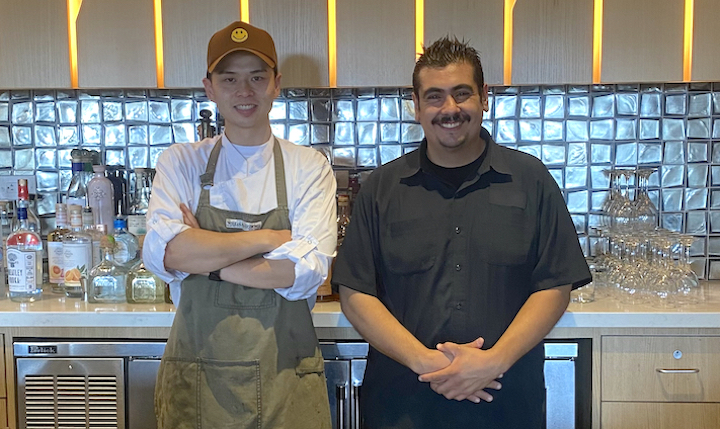
Chef Hayato and bartender Juan Pena of the Sonesta Hotel embody a hip fusion of cultures that defines the hospitality of Southern California. Photo by Jian Huang
Using herbs grown on the premises, Juan Pena, SOL’s lead bartender, pairs Hayato’s creations with delightful and fragrant cocktails like Hibiscus Sour and Mezcal Tamarind. Visitors will depart not only with full bellies but also the satisfaction of having been served by a staff that takes pride in what they do.
Asian Culture In Southern California Continues To Grow
Asian culture in Southern California is vibrant and uniquely Californian. Most tourists will always come here to see Hollywood, Beverly Hills and the beaches of Malibu. But those who take the time to venture to South Bay and beyond will see there are equally interesting and exotic cultures to discover.![]()
Jian Huang is the Communications Director for EWNS. Her previous stories introduced Benedictine monks at the Subiaco Abbey in Arkansas, the San Fernando Valley’s Relics Museum. and Chinese New Year’s Year of the Rabbit.

